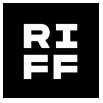Protection of our employees
We took and continue to take, important steps to protect our employees during this period, including:
| | • | | Mandatory mask policy in all common and production areas; |
| | • | | Staggered work schedules, banning all non-essential contractors and closing our facility to guests, all to reduce flow of traffic into and out of our facilities; |
| | • | | Staggered employee breaks, redesigned work stations and processes to minimize employee interaction and ensure appropriate social distancing; |
| | • | | Installed thermal scanners at all facility employee entrances to monitor employee temperatures; |
| | • | | Enhanced sanitation of work areas, both in terms of breadth and depth of cleanings; and |
| | • | | Implemented mandatory 14-day quarantines for all workers returning from out of country visits. |
Giving back to our communities
We are providing multiple programs to seniors and front-line healthcare workers in the local Leamington community to support them during this period, including having:
| | • | | Made various donations to Erie Shores Community Hospital; |
| | • | | Made a donation of excess personal protective equipment to Erie Shores Community Hospital; |
| | • | | Piloted ‘The Wellness Lounge’, a virtual mental health forum to promote mental health awareness, community and connections among Veterans and First Responders in conjunction with Wounded Warriors Canada; |
| | • | | Continued the Aphria Supports program, where employee volunteers operate a dedicated local phone number for seniors and front-line healthcare workers to purchase and deliver groceries and other necessities during this difficult time; and, |
| | • | | Continued a 10% discount on medical products to compensate for the current economic climate. |
Brand and Product portfolio
The Company’s brand and product portfolio continue to grow in stature and size. The Company’s early efforts in consumer segmentation laid the cornerstone for its brand strategy and has continued to grow as a result of the Company’s focus on product and its competitive pricing strategy. The end result continues to resonate with new and repeat purchasers.
Canadian market overview
During the quarter, the Canadian cannabis retail market grew from an annualized value of $2.9 billion at the start of the quarter, to $3.2 billion in October10. The four largest markets remain Ontario, Quebec, Alberta and British Columbia, which represent over 80% of the Canadian market10.
During the period, the top provincial markets grew as follows:
| | • | | Ontario grew the most from $0.8 billion to $1.0 billion, or 25%10; |
| | • | | Quebec grew from $0.5 billion to $0.6 billion, or 8%10; |
| | • | | Alberta grew from $0.6 billion to $0.7 billion or 7%10; and, |
| | • | | British Colombia grew from $0.4 billion to $0.5 billion, or 4%10. |
During this period, the Company maintained its #1 position, as the top licensed producer in terms of sales to provincial boards across all brands, in both Ontario11 and Alberta11. In Ontario, the Company maintained a 16.9 share11, and in Alberta, it maintained a 12.2 share11, both as measured in the same manner as above. For the same period, the Company maintained a #3 position in British Columbia11, the #3 position in Saskatchewan11 and based on its own internal estimates, the Company believes that it maintained the #4 position in Quebec
∎ Disclosure Controls and Procedures and Management’s Annual Report on Internal Control Over Financial Reporting
Disclosure controls and procedures are designed to provide reasonable assurance that material information required to be publicly disclosed by a public company is gathered and reported to senior management, including the Chief Executive Officer (“CEO”) and the Chief Financial Officer (“CFO”), on a timely basis so that appropriate decisions can be made regarding public disclosure. An evaluation of the effectiveness of the Company’s disclosure controls and procedures was conducted as of May 31, 2020, based on the criteria set forth in the Internal Control-Integrated Framework (2013) issued by the Committee of Sponsoring Organizations of the Treadway Commission (“COSO”) by and under the supervision of the Company’s management, including the CEO and the CFO. Any controls and procedures, no matter how well designed and operated, can provide only reasonable assurance of achieving the desired control objectives. Based on this evaluation, the CEO and the CFO concluded that the Company’s disclosure controls and procedures (as defined in National Instrument 52- 109 - Certification of Disclosure in Issuers’ Annual and Interim Filings of the Canadian Securities Administrators and Rule 13a-15(e) and 15d-15(e) under the Exchange Act within the U.S.) were effective in providing reasonable assurance that material information relating to the Company is made known to them and information required to be disclosed by the Company is recorded, processed, summarized and reported within the time periods specified in such legislation.
Under the supervision of the CEO and CFO, the Company designed internal control over financial reporting (as defined in the SEC’s rules and the rules of the Canadian Securities Administrators) to provide reasonable assurance regarding the reliability of financial reporting and the preparation of consolidated financial statements for external purposes in accordance with IFRS. Management is responsible for establishing and maintaining adequate internal control over financial reporting. The Company’s internal control over financial reporting includes those policies and procedures that:
| | • | | pertain to the maintenance of records that, in reasonable detail, accurately and fairly reflect the transactions and dispositions of the Company’s assets; |
| | • | | provide reasonable assurance that transactions are recorded as necessary to permit preparation of financial statements in accordance with International Financial Reporting Standards as issued by the International Accounting Standards Board, and that the Company’s receipts and expenditures are being made only in accordance with authorizations of the Company’s management and directors; and |
| | • | | provide reasonable assurance regarding prevention or timely detection of unauthorized acquisition, use or disposition of the Company’s assets that could have a material effect on the Company’s financial statements. |
Because of its inherent limitations, internal control over financial reporting may not prevent or detect misstatements. Also, projections of any evaluation of effectiveness to future periods are subject to the risk that controls may become inadequate because of changes in conditions, or that the degree of compliance with the policies or procedures may deteriorate.
The Company’s management team, under the supervision of the CEO and the CFO, has evaluated the effectiveness of internal control over financial reporting using COSO to design the Company’s internal control over financial reporting. Based on the evaluation performed, management has concluded that internal control over financial reporting was effective as of May 31, 2020.
The effectiveness of the Company’s internal control over financial reporting as of May 31, 2020 has been audited by PricewaterhouseCoopers LLP, an independent registered public accounting firm, as stated in their report which accompanies the consolidated financial statements.
It is important to understand that there are inherent limitations on effectiveness of internal controls as stated within COSO. Internal controls, no matter how well designed and operated, can only provide reasonable assurance to management and the Board of Directors regarding achievement of an entity’s objectives. These inherent limitations include the following:
| | • | | Judgments in decision-making can be faulty, and control and process breakdowns can occur because of simple errors or mistakes; |
| | • | | Controls can be circumvented by individuals, acting alone or in collusion with each other, or by management override; |
| | • | | The design of any system of controls is based in part on certain assumptions about the likelihood of future events, and there can be no assurance that any design will succeed in achieving its stated goals under all potential future conditions; and |
| | • | | Over time, controls may become inadequate because of changes in conditions or deterioration in the degree of compliance with policies or procedures. |
As a result, there is no certainty that an organization’s disclosure controls and procedures or internal control over financial reporting will prevent all errors or all fraud. Even disclosure controls and procedures and internal control over financial reporting determined to be effective can only provide reasonable assurance of achieving their control objectives.
In accordance with the provisions of National Instrument 52-109 – Certification of Disclosure in Issuers’ Annual and Interim Filings, the Company has limited the design of its disclosure controls and procedures and internal control over financial reporting to exclude controls, policies and procedures of SweetWater. Aphria Inc. acquired the SweetWater on November 25, 2020, and the brand portfolio and other assets acquired are currently operated by Aphria Inc’s wholly-owned subsidiary, Four Twenty Corporation
Further details related to the acquisition of SweetWater are included in Note 10 in the Notes to the Company’s interim condensed consolidated financial statements for the three- and six-month periods ended November 30, 2020.
Since the completion of the acquisition of SweetWater on November 25, 2020, the acquired brands and assets have contributed $881 to revenues and $299 in net earnings. The purchase price has been preliminarily allocated as described in Note 10 to the interim condensed consolidated financial statements for the three and six months ended November 30, 2020.
The scope limitation discussed under this section is primarily based on the time required to assess SweetWater Brewing Company’s disclosure controls and procedures and internal control over financial reporting in a manner that is consistent with the Company’s other operations.
Except for the preceding changes, there have been no changes in the Company’s internal control over financial reporting during the three months ended November 30, 2020 that have materially affected, or are reasonably likely to materially affect, the Company’s internal control over financial reporting.
10 Per Stats Canada report – October 2020
11 Per Headset reporting data – November 2020














